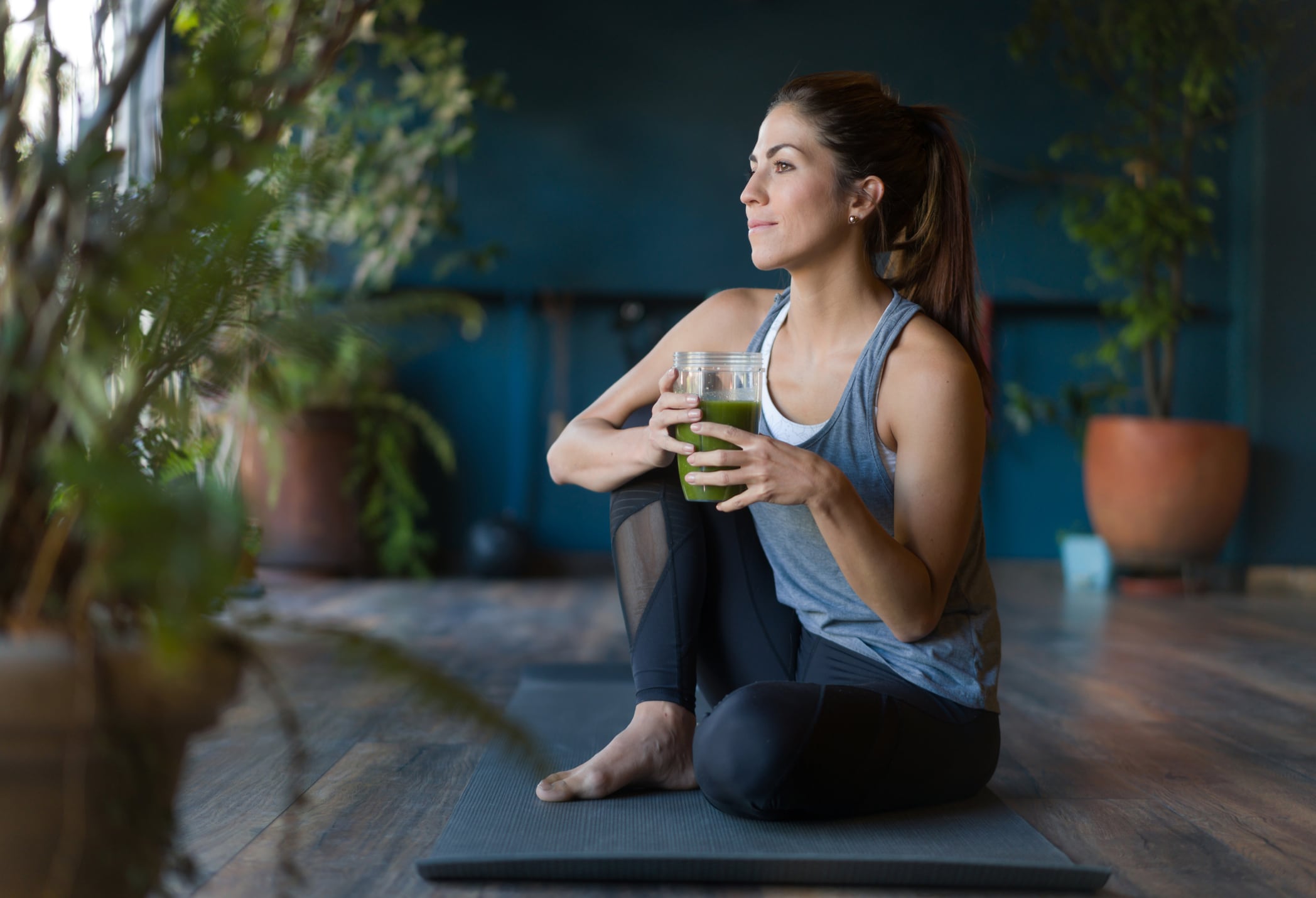For many modern consumers, a long life is no longer enough – rather, now they want a long, happy and healthy life, which is pushing many to rethink their dietary choices to include foods and beverages that support not just longevity, but also their vitality.
According to the Hartman Group’s recently published report, Health & Wellness 2025: The interplay of Vitality and Longevity, 68% of consumers agree living a “good life in their later years” is more important than living as long as possible, compared to 45% who prioritize living as long as they can. The research also reveals that nearly three-quarters of consumers believe they can control how well they age based on physical activity and personal nutrition, with both discipline and indulgence playing a role.
In this episode of FoodNavigator-USA’s Soup-To-Nuts podcast, Hartman Group Vice President of Syndicated Studies Melissa Abbott shares details about how consumer aspirations and needs for health and wellness are evolving, including the difference between longevity and vitality, and how this is shaping shoppers’ expectations for foods and beverages. For example, she breaks down the attributes consumers seeks in food and beverages to “ladder up to the desire for long-term health and vitality,” including nutrients they are adding and avoiding. She also breaks down shifts in who shoppers think are responsible for ensuring food is healthy and how this is creating opportunities for brands and retailers.
Explore past episodes of Soup-To-Nuts podcast
Never miss an episode of FoodNavigator-USA’s Soup-To-Nuts podcast - subscribe today.
Catch up on past episodes of Soup-To-Nuts:
- Five Strategies to boost share as geopolitical tensions and inflation constrict consumer spending – CPG sales and volumes are slipping among persistent inflation and tariff fears, but Circana uncovers how food and beverage manufacturers are maintaining – and gaining – share despite the shaky market
- Where is the line for ingredient bans and when should companies comply vs pushback? – FDA’s sweeping plan to eliminate synthetic colors from the US food system announced last week marks a turning point in the war on food dyes that has long been fought at the state level and which before that pitted big food against outspoken consumer advocates who often relied on passion and fearmongering more than science
- Better tasting better-for-you beverages: Bold flavors and improved mouthfeel drive growth of functional drink sales – Consumers increasingly are unwilling to compromise taste or health when buying beverages – opening the door for innovative brands that deliver both functional benefits and refreshing experiences
- Five trends reshaping chocolate: From clean label to flavor innovation to cost containment – Up and coming chocolate brands are rethinking how they make – and package – chocolate to meet rising consumer demand for better-for-you and clean-label options, while simultaneously navigating rising costs
- Flavor trends: How to balance authenticity and access when introducing global dishes - Consumers say they want adventurous new flavors and international cuisine, but many are hesitant to try something unfamiliar - creating a ‘conundrum’ for manufacturers and marketers introducing global flavors
How is the shift from longevity to vitality influencing food purchases?
Based on insights from a national survey of nearly 2,200 adults, digital ethnographies with 14 participants and in-depth interviews with eight participants who shared their perspectives in 60-minute follow-up one-on-one interviews, The Hartman Group found consumer definitions of health and wellness are deepening as they reexamine the societal impacts of health and wellness and reprioritize their participation in those expectations.
For example, The Hartman Group found more consumers considered the ability to deal with stress, enjoy time with family and not being overweight to be key dimensions of health and wellness compared to 2023 when the group last examined the topic. The Hartman Group also found that in the pursuit of longevity, or living a healthier life for longer, vitality simultaneously fully emerged as an ideal for living well with 81% of consumers agreeing it is important to maintain a high level of vitality, which The Hartman Group defines simply as “having the vibrancy to enjoy life.”
Abbott explains these two terms are “intertwined” in their influence of how consumers prioritize their health and wellness goals and make short and long-term dietary decisions.
“People are really interested in this desire for longevity. Consumers are talking about how, ‘I just want to be able to live a healthier life for longer and that plays a really big role in my lifestyle today,” but they also are thinking about how they feel day-to-day and that is vitality, she explained.
“There are some differences in how consumers are approaching these,” she added.
For longevity, consumers are looking for foods and beverages that support specific health conditions, such as high cholesterol, which 60% of survey respondents said they are treating or preventing – up 4 percentage points from the previous study in 2023. Likewise, 56% of consumers cited heart health, up 5 percentage points from 2023, and 61% noted high blood pressure, which also is up 5 percentage points.
For vitality, consumers are managing conditions that contribute to their quality of life. For example, 69% said they are managing stress or anxiety – up 6 percentage points from 2023 – and 55% noted they are treating or preventing memory and cognitive challenges, which is up 10 percentage points from 2023, according to the study.
Many consumers are evaluating food and beverages based on their ability to support these goals. For example, 84% indicated they look for products that are good for their heart or lower their cholesterol, 80% want immunity-boosting products and 74% want food and beverages that support their specific diet, according to the report.
Consumers turn away from alcohol for physical and emotional wellness
Consumers seeking products that check boxes for both their physical and emotional health increasingly are looking for non-alcoholic beverages. According to The Hartman Group’s report, 59% of consumers report they are avoiding or reducing alcohol, which is up 7 percentage points from 2023. Likewise, only 5% said they were adding or increasing their alcohol consumption, which is down 5 percentage points from the 2023 study.
“What is fascinating about this is it goes back that notion of ‘how do I feel?’ So, of course, alcohol can help us feel very good, but there is this fine line where waking up the next not feeling as good. So, there is a lot more social flexibility and acceptance around not drinking tonight,” said Abbott.
Ultra-processed food concerns trigger ‘blame game’
All the hub-bub about ultra processed foods also is starting to seep into the mainstream consumers’ collective consciousness and influence their food choices, but Abbott notes most consumers carve out space in their diet for UPFs that support their mental wellness.
She explains that for years consumers have avoided high fructose corn syrup, artificial dyes, flavors and preservatives and artificial sweeteners because they consider them detrimental to their longevity and vitality.
But, she said, many consumers still have “cheat products” in their pantries that are ultra processed but support their mental wellness.
The debate around the safety of ultra processed foods has prompted some unexpected finger-pointing about who is responsible for ensuring food is healthy, which Abbott notes is creating opportunities for retailers, brands and other stakeholders to step forward to reassure shoppers and in turn potentially earn their loyalty.
For example, the study found 44% of consumers believe manufacturers and food processors are responsible for ensuring food is healthy while 33% consider the same for supermarkets and stores.
Products made with simple, healthful ingredients and retailers with broader selections of whole foods and better-for-you products will resonate better with these consumers, said Abbott.
Personalized nutrition ticks up
The Hartman Group also found that an exponential increase in access to health data – including from wearables, but also how nutrition impacts personal goals and how genetics factor into metabolism – is driving a desire for more personalized nutrition to support vitality and longevity.
For example, the report found 88% of consumers agree that everyone is a bit different so people need a mix of foods and exercise customized for their needs.
Abbott notes that one way brands and retailers can tap into this trend is by leveraging influencers with whom consumers feel a personal connection or share dietary values or health attributes.
Based on consumers’ evolving perceptions of how nutrition impacts their health and mental wellbeing, Abbott recommends brands and retailers consider how they can culturally engage and support consumers goals. She also encourages brands to think about what health conditions pose the greatest opportunity for their product or target consumer and how they support the priorities and conditions that are most relevant for individuals based on their age and life stage.
The Hartman Group’s Health & Wellness 2025 report includes many more insights from consumers around the interplay of vitality and longevity and guidance for businesses as they look for ways to connect with shoppers.




